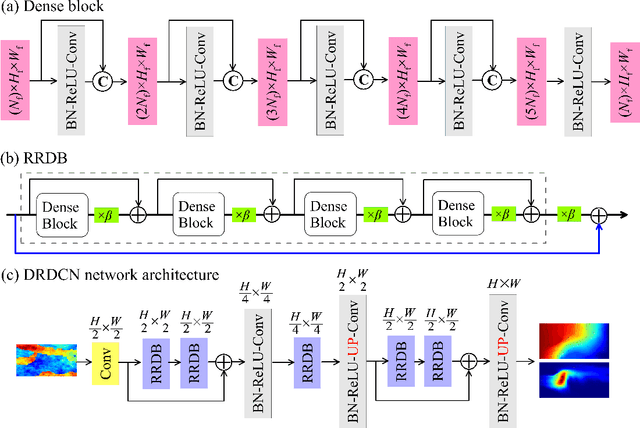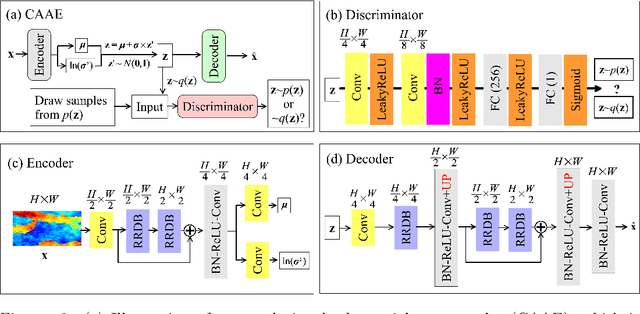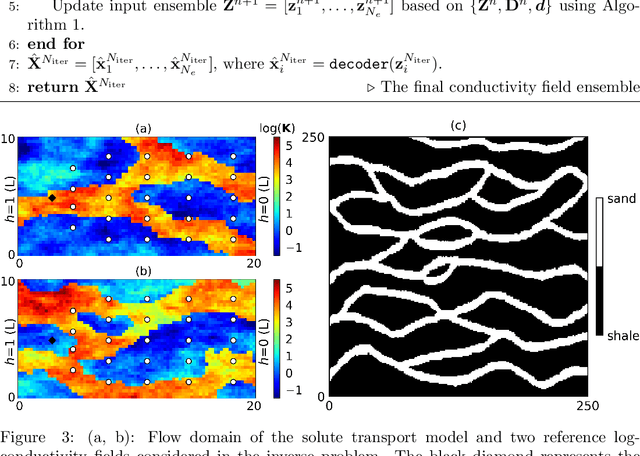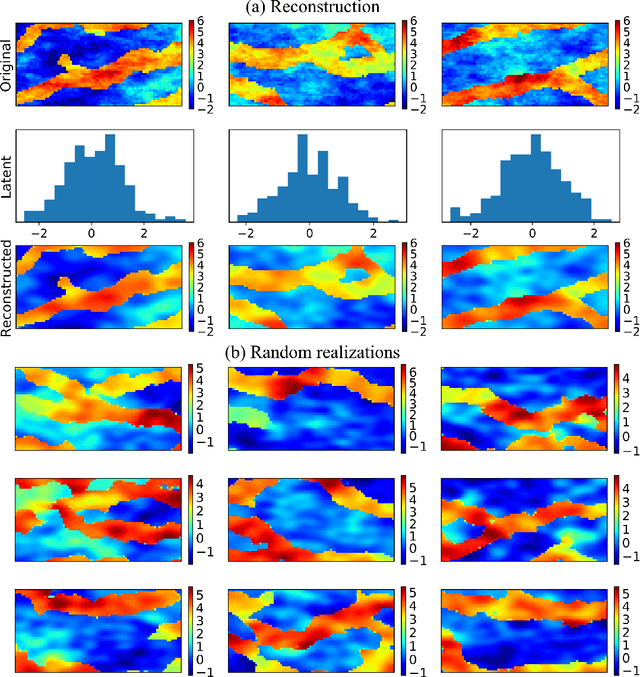Integration of adversarial autoencoders with residual dense convolutional networks for inversion of solute transport in non-Gaussian conductivity fields
Paper and Code
Jul 31, 2019



Characterization of a non-Gaussian channelized conductivity field in subsurface flow and transport modeling through inverse modeling usually leads to a high-dimensional inverse problem and requires repeated evaluations of the forward model. In this study, we develop a convolutional adversarial autoencoder (CAAE) network to parameterize the high-dimensional non-Gaussian conductivity fields using a low-dimensional latent representation and a deep residual dense convolutional network (DRDCN) to efficiently construct a surrogate model for the forward model. The two networks are both based on a multilevel residual learning architecture called residual-in-residual dense block. The multilevel residual learning strategy and the dense connection structure in the dense block ease the training of deep networks, enabling us to efficiently build deeper networks that have an essentially increased capacity for approximating mappings of very high-complexity. The CCAE and DRDCN networks are incorporated into an iterative local updating ensemble smoother to formulate an inversion framework. The integrated method is demonstrated using a synthetic solute transport model. Results indicate that CAAE is a robust parameterization method for the channelized conductivity fields with Gaussian conductivities within each facies. The DRDCN network is able to obtain an accurate surrogate model of the forward model with high-dimensional and highly-complex concentration fields using relatively limited training data. The CAAE paramterization approach and the DRDCN surrogate method together significantly reduce the number of forward model runs required to achieve accurate inversion results.
 Add to Chrome
Add to Chrome Add to Firefox
Add to Firefox Add to Edge
Add to Edge